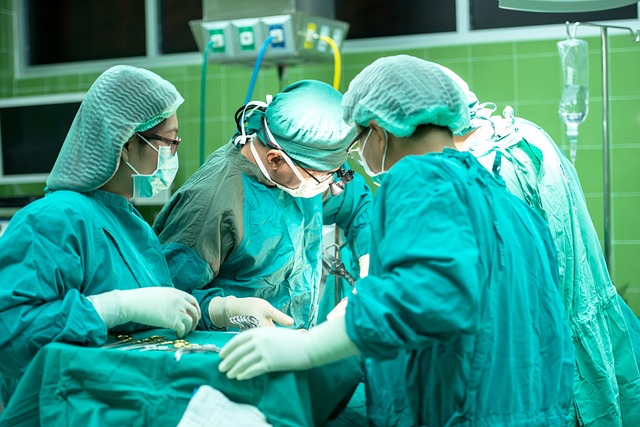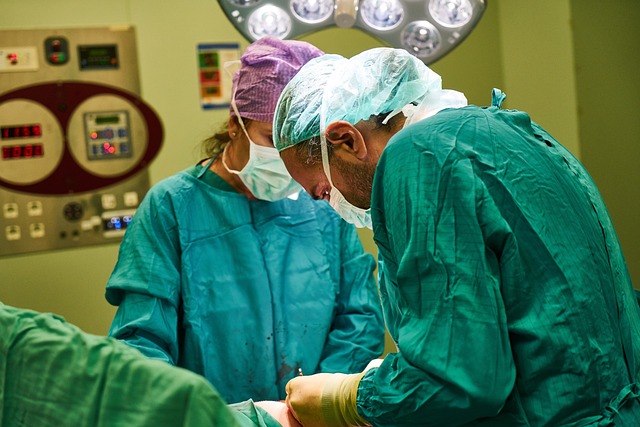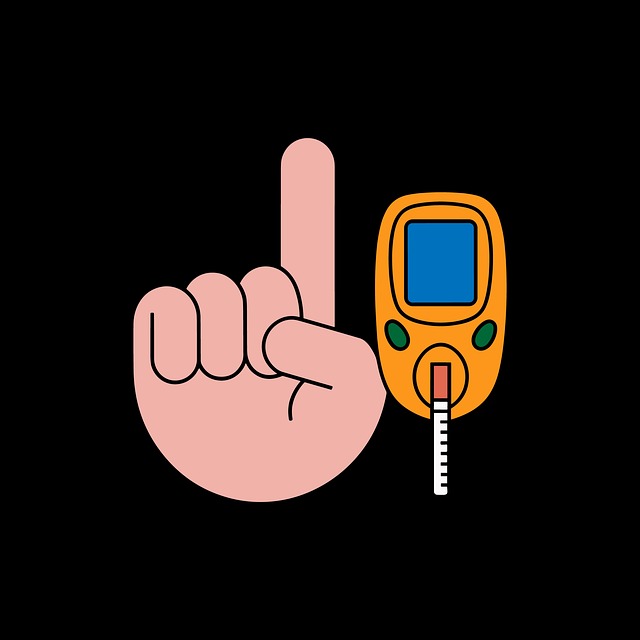Post-operative care is evolving with the emergence of regenerative post-surgery treatments that focus on optimizing patient healing and recovery. Traditional methods involving lengthy hospital stays and invasive procedures are being replaced by non-invasive post-op treatments, such as platelet-rich plasma (PRP), stem cell therapy, and light therapy. These innovative solutions accelerate tissue repair therapy and rehabilitation, offering faster, more effective recovery after surgery with reduced risk. By harnessing the body's natural healing mechanisms, these regenerative recovery support solutions enhance surgery recovery solutions and significantly improve patient outcomes.
Post-operative care is a critical phase in a patient’s journey, often challenging traditional recovery methods. This article explores the emergence of non-invasive solutions designed to enhance healing after surgery, focusing on regenerative treatments as a game-changer in post-surgery recovery. We delve into understanding the body’s natural healing process and the challenges associated with conventional care. By examining innovative regenerative post-surgery treatments, we uncover effective healing therapies, including tissue repair techniques, that support faster and improved rehabilitation.
- Understanding Post-Operative Healing: The Body's Natural Process
- Challenges in Traditional Post-Surgery Recovery
- Emergence of Non-Invasive Solutions for Enhanced Healing
- Regenerative Treatments: A Deep Dive into Effective Methods
- Integrating Non-Invasive Post-Op Care into Medical Practice
Understanding Post-Operative Healing: The Body's Natural Process

Post-operative care goes beyond the operating room, encompassing a critical period of healing and recovery for patients. Understanding the body’s natural response to surgery is essential in developing effective regenerative post-surgery treatments. After any surgical procedure, the body initiates a complex process involving inflammation, tissue repair, and remodeling to restore function and structural integrity. This intricate journey includes various phases, from the initial inflammatory response that helps clear debris and protect the wound, to the proliferation phase where new cells are generated, and finally, the remodeling stage where collagen production strengthens the healing tissues.
Optimizing this natural process is the goal of many non-invasive post-op treatments, including regenerative therapies aimed at enhancing recovery after surgery. These innovative solutions focus on promoting tissue repair therapy and accelerating rehabilitation and recovery without inciting additional trauma to the body. By employing advanced techniques and treatments like platelet-rich plasma (PRP), stem cell therapy, or light therapy, healthcare professionals can offer patients effective healing therapies that support regenerative recovery.
Challenges in Traditional Post-Surgery Recovery

The traditional approach to post-operative care often involves lengthy hospital stays, intense physical therapy, and a high risk of complications. This method can be invasive, time-consuming, and often leaves patients feeling vulnerable and in pain. The focus is primarily on managing symptoms rather than promoting true healing. Many patients face challenges like reduced mobility, prolonged discomfort, and even extended periods of rehabilitation, impacting their quality of life during the recovery process.
Moreover, conventional post-surgery recovery may not always lead to optimal outcomes, as it fails to address the body’s natural regenerative capabilities. This is where non-invasive post-operative treatments come into play, offering a promising alternative. Regenerative therapies and healing modalities can accelerate tissue repair, enhance rehabilitation efforts, and ultimately support faster, more effective recovery after surgery.
Emergence of Non-Invasive Solutions for Enhanced Healing

The emergence of non-invasive solutions has revolutionized post-operative care, offering innovative approaches to accelerate healing and enhance patient outcomes. Traditional post-surgery recovery often involves lengthy rehabilitation processes and potential side effects from invasive treatments. However, modern advancements in regenerative medicine have introduced a range of promising regenerative post-surgery treatments. These cutting-edge therapies focus on the body’s natural healing mechanisms, aiming to support recovery after surgery without the risks associated with more aggressive interventions.
By utilizing advanced techniques such as growth factor therapies, platelet-rich plasma (PRP), and stem cell applications, healthcare professionals can now provide targeted healing therapy tailored to specific surgical needs. These non-invasive post-op treatments stimulate tissue repair, promote wound healing, and potentially reduce scar formation. Moreover, they offer a more comfortable recovery experience for patients, minimizing downtime and enabling quicker return to daily activities. Such regenerative recovery support has gained significant traction in various medical fields, transforming the way we approach surgery recovery solutions.
Regenerative Treatments: A Deep Dive into Effective Methods

Regenerative treatments are emerging as game-changers in post-operative care, offering promising solutions for enhanced recovery after surgery. These cutting-edge therapies focus on the body’s natural healing mechanisms to accelerate and optimize tissue repair and rehabilitation. One of the key methods is regenerative post-surgery treatments, which go beyond traditional recovery techniques by stimulating the patient’s cellular response to wound healing.
Healing therapies like platelet-rich plasma (PRP) and mesenchymal stem cell (MSC) therapy are at the forefront of this revolution. PRP involves injecting concentrated platelets from a patient’s own blood to promote tissue regeneration and reduce inflammation. MSCs, on the other hand, can differentiate into various cell types, making them versatile in repairing damaged tissues. These non-invasive post-op treatments have shown remarkable results in supporting regenerative recovery support, particularly in surgical procedures involving soft tissue, muscles, and joints.
Integrating Non-Invasive Post-Op Care into Medical Practice

Integrating non-invasive post-operative care into medical practice is a significant step towards enhancing patient outcomes and improving overall satisfaction with surgery. As patients increasingly seek holistic approaches to healing, regenerative post-surgery treatments offer a promising alternative to traditional recovery methods. These innovative solutions focus on stimulating the body’s natural healing mechanisms, promoting tissue repair therapy, and providing comprehensive rehabilitation and recovery support.
By incorporating these advanced healing therapies, healthcare providers can significantly reduce the time spent in recovery, lessen pain, and minimize scarring. Non-invasive post-op treatments cater to a wide range of surgical procedures, making them versatile tools for medical professionals. From acupuncture and massage therapy to light-based healing and biomimetic products, these methods provide effective ways to accelerate the recovery process without the risks associated with more invasive interventions.
The evolution of non-invasive solutions for post-operative healing marks a significant shift in medical practice. By harnessing the power of regenerative treatments and integrating them into standard care, healthcare professionals can enhance recovery after surgery, offering patients faster and more effective results. As we continue to explore these innovative approaches, such as tissue repair therapies and regenerative recovery support, the future of post-operative care appears promising, with improved patient outcomes and streamlined rehabilitation processes in sight.
